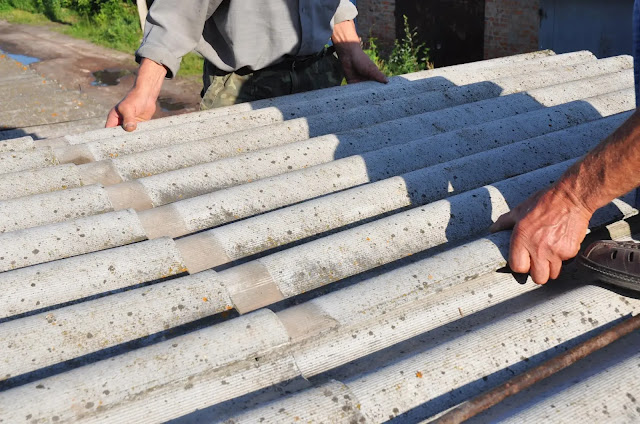What Are Asbestos Roof Sheets & How to Dispose Them?
Asbestos roof sheets are roofing materials that contain asbestos fibers. These sheets were commonly used in the past due to asbestos' properties such as durability, heat resistance, and insulation capabilities. However, it is important to note that asbestos is now recognized as a hazardous material due to its association with serious health risks, including lung diseases and certain types of cancer.
When it comes to the disposal of asbestos-containing materials, including asbestos roof sheets, it is crucial to follow proper procedures to ensure the safety of both yourself and the environment.
Asbestos roof sheets were commonly
used in construction for their fire resistance, durability, and affordability.
They were particularly popular in the mid-20th century but have since been
phased out due to the health risks associated with asbestos exposure. Asbestos
fibers, when inhaled, can lead to serious lung diseases such as asbestosis, mesothelioma, and lung cancer.
When it comes to disposing of
asbestos roof sheets, it is essential to prioritize safety and follow the
proper procedures to prevent the release of asbestos fibers into the air or
water. Handling asbestos requires specialized knowledge and equipment, which is
why it is strongly recommended to hire licensed professionals for the removal
and disposal process.
These professionals have the expertise
to assess the extent of asbestos contamination, plan a safe removal strategy,
and properly package the asbestos-containing materials for disposal. They will
follow established protocols, including wetting the sheets to minimize fiber
release and wearing protective clothing, masks, and gloves.
Local regulations play a crucial role
in determining the specific procedures for asbestos disposal. They may require
obtaining permits, notifying relevant authorities, or utilizing specific
disposal facilities. It is important to research and comply with the
regulations applicable to your region to ensure legal and safe disposal.
Transporting asbestos materials
should be done in sealed containers labeled as containing asbestos. Specialized
vehicles may be required for transportation to authorized facilities equipped
to handle asbestos waste. Regular trash bins, recycling centers, or landfill
sites are not suitable for asbestos disposal.
Once the asbestos roof sheets are
properly disposed of, it is essential to monitor the disposal site and conduct
necessary testing to ensure that there is no environmental contamination or
health risks. Ongoing maintenance and regular inspections of existing
asbestos-containing materials in buildings are also recommended to prevent
accidental exposure.
It is crucial to prioritize safety
and follow local guidelines and regulations when dealing with asbestos roof
sheets or any other asbestos-containing materials. Consultation with
professionals and relevant authorities will help ensure that the disposal
process is carried out in a manner that protects both human health and the
environment.
Here are general guidelines for the disposal of asbestos roof sheets:
Consult local regulations: Check your local regulations and guidelines regarding the
handling and disposal of asbestos-containing materials. These regulations may
vary from one jurisdiction to another, so it is essential to understand the
specific requirements in your area.
Hire professionals: Asbestos removal and disposal should be carried out by trained and
licensed professionals who specialize in asbestos abatement. They have the
knowledge, experience, and equipment necessary to handle asbestos safely and
legally.
Obtain necessary permits: Depending
on your location, you may need to obtain permits or approvals from local
authorities before removing or disposing of asbestos-containing materials.
Ensure that you comply with any permit requirements and notify the appropriate
agencies as needed.
Proper containment: Asbestos roof sheets must be carefully removed while minimizing the
release of asbestos fibers. This usually involves wetting the sheets to prevent
dust and using appropriate tools and techniques to remove them intact.
Secure packaging: Once removed, the asbestos-containing materials should be securely
packaged in designated containers that are specifically designed for asbestos
disposal. These containers are typically labeled and sealed to prevent the
release of asbestos fibers.
Transport and disposal: Transport the packaged asbestos materials to an authorized
disposal facility or transfer station that can handle asbestos waste. Do not
dispose of asbestos in regular trash bins or landfill sites not equipped to
handle hazardous materials.
Remember, it is crucial to consult with local authorities and asbestos removal professionals to ensure that you follow the specific guidelines and regulations in your area. Asbestos removal and disposal require expertise to protect both yourself and the environment from the dangers associated with this hazardous material.
Also Check: Pleurocentesis (Thoracentesis) Procedure, Risks & Complications




Comments
Post a Comment